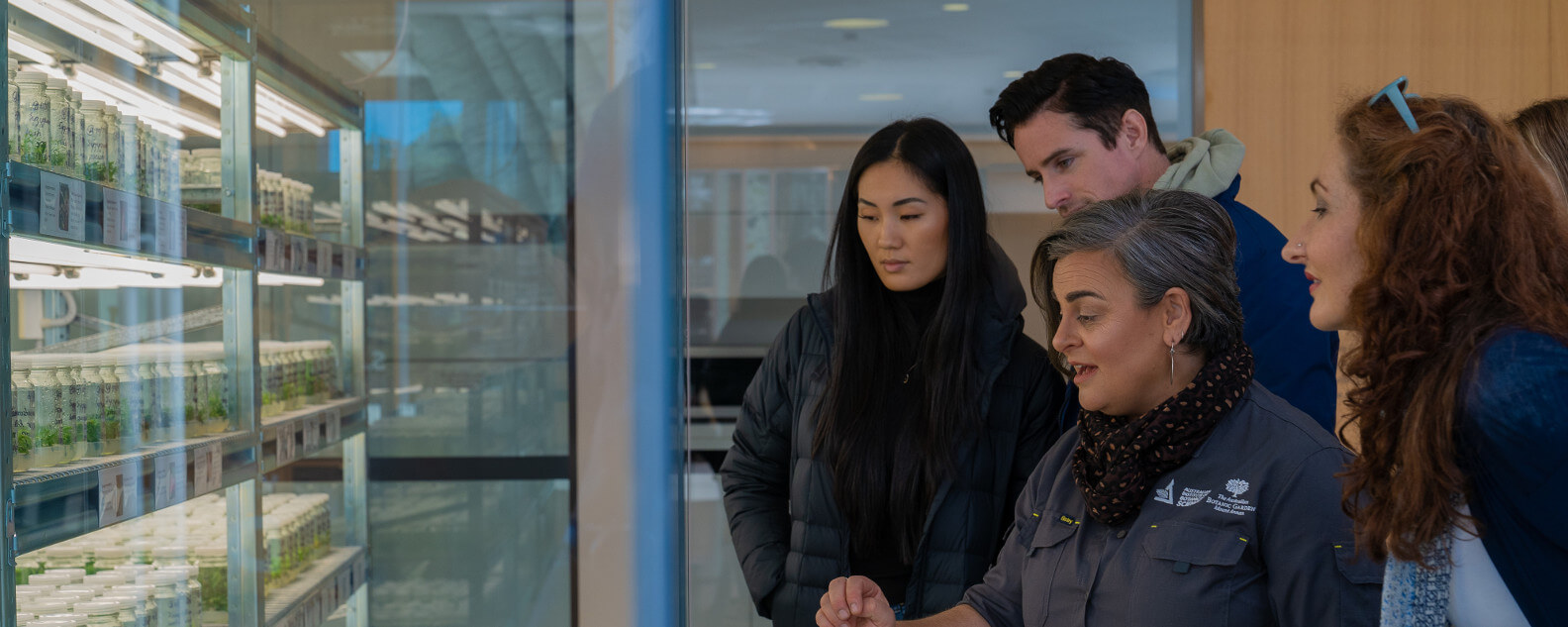Sustainability at PlantBank
PlantBank is stunning, strong and sustainable. Clever engineering is at the heart of this unique, energy-efficient facility.

Plants are adapted to make best use of their surroundings, including soil type, available nutrients, climate, sunlight and rainfall. Similarly, the Australian PlantBank has been carefully designed to integrate with and respond to the landscape, environment and operational needs.
The sustainable design
The sustainable design was recognised with the RAIA National Award for Sustainable Architecture in 2014.
- Roof and gutter systems harvest rainwater to flush toilets and water the lichen garden.
- Building orientation and design makes use of natural light, the sun’s warmth and prevailing winds for passive heating and cooling.
- The internal environments are carefully controlled to minimise energy use.
- Solar panels on the roof provide 80-90% of PlantBank's power needs.
Building materials have been carefully selected
Building materials were chosen for their insulation properties, sustainability, recyclability, pest and rodent exclusion, low maintenance and fire resistant qualities.
- Concrete, steel and aluminium: high recycled content, low maintenance and low combustibility.
- Sustainable timbers: a renewable resource, sourced locally where possible. The veneer used throughout the building is Eucalyptus regnans (mountain ash), the largest flowering tree in the world.
- Minimum use of products containing toxic VOCs, PCBs and PVC.
- Materials with low combustibility counteract the proximity to the woodland and the risk of bushfire attack, for example, stainless steel mesh has been placed over all opening windows to prevent the entry of embers.
The Australian PlantBank building includes two subterranean thermal labyrinths
Air is pulled very slowly through metal screens into the labyrinths.
On a summer’s day, the thermal mass of the ground and the concrete labyrinths can pre-cool the air by up to 7.5°C before it reaches the building’s air-conditioning system. In winter, the labyrinth can be used to warm the air, making the building more energy-efficient, and comfortable for staff and visitors.
Stunning, strong and sustainable